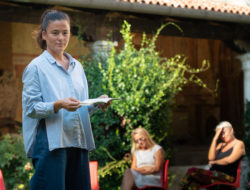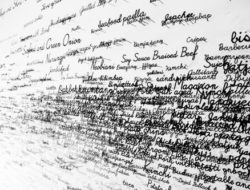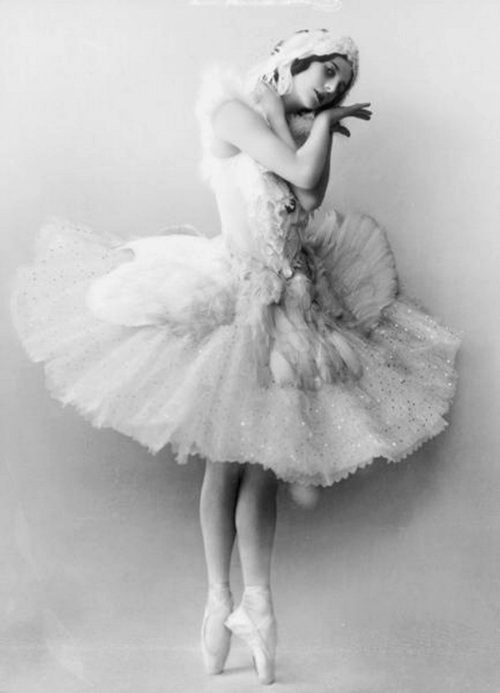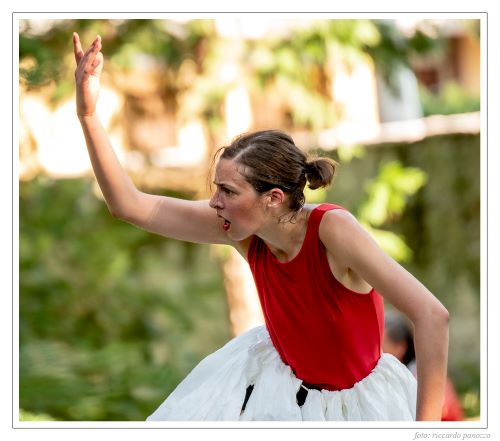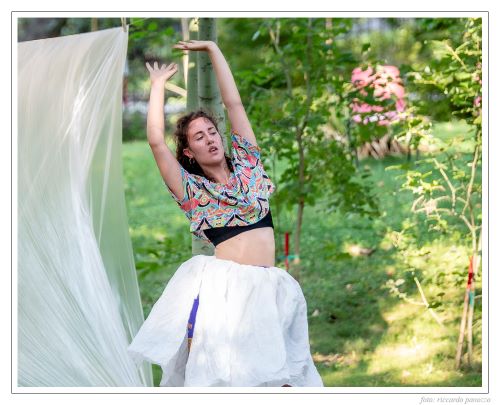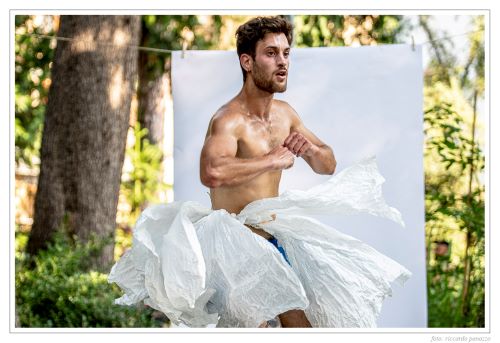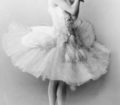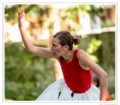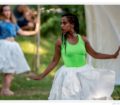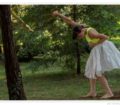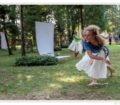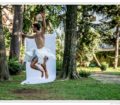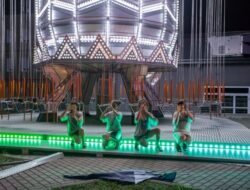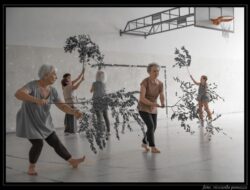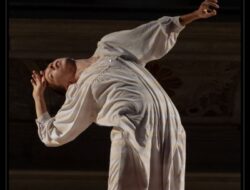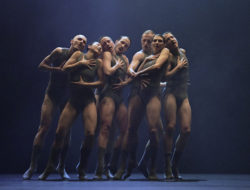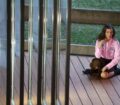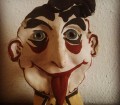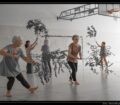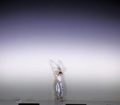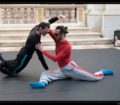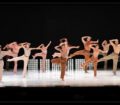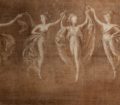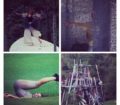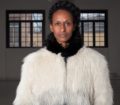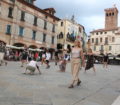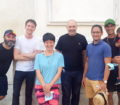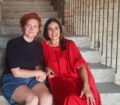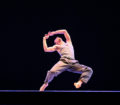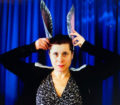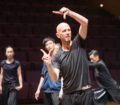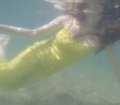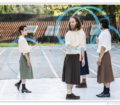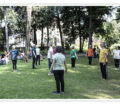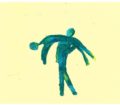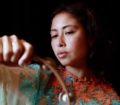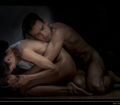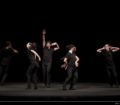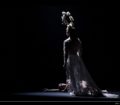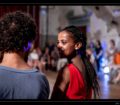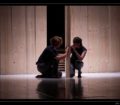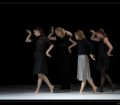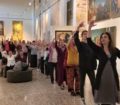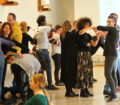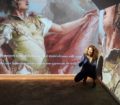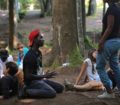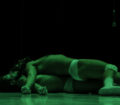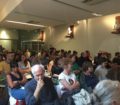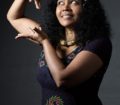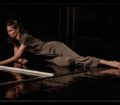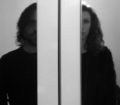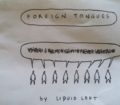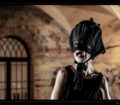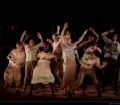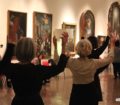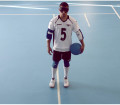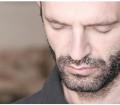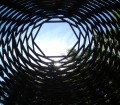IL TESTO ORIGINALE ITALIANO SEGUE QUELLO INGLESE.
Anna Pavlova & Nora Chipaumire: a possible heterotopia
Filter number 1 | Tradition
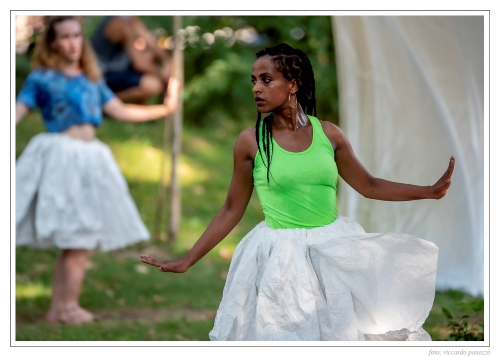
Selamawit Biruk in “Virtual studies for a Dark Swan”
“Utopias afford consolation: although they have no real locality there is nevertheless a fantastic, untroubled region in which they are able to unfold; they open up cities with vast avenues, superbly planted gardens, countries where life is easy, even though the road to them is chimerical. Heterotopias are disturbing, probably because they secretly undermine language, because they make it impossible to name this and that, because they shatter or tangle common names, because they destroy ‘syntax’ in advance, and not only the syntax with which we construct sentences but also that less apparent syntax which causes words and things (next to and also opposite one another) to ‘hold together’. This is why utopias permit fables and discourse […]; heterotopias […] desiccate speech, stop words in their tracks, contest the very possibility of grammar at its source; they dissolve our myths and sterilize the lyricism of our sentences” – Michel Foucault wrote in The Order of Things: An Archaeology of the Human Sciences (1966).
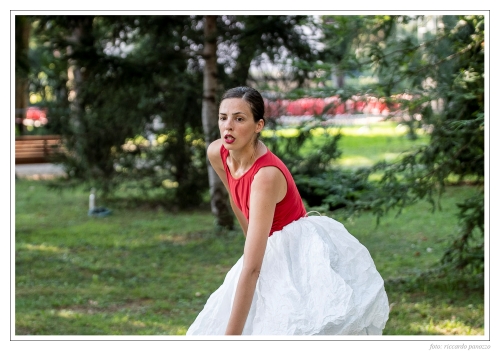 Perhaps this is why Nora Chipaumire’s production Virtual Studies for a Dark Swan is tricky to talk about. Indeed, it is a corollary of a heterotopia, of a kind that Foucault himself could never have imagined: conceived in vitro, during lockdown of planet Earth. The fount of this performance was digital space. Its cradle was physical space, inside bodies of flesh and blood, witnessed by an audience of flesh and blood.
Perhaps this is why Nora Chipaumire’s production Virtual Studies for a Dark Swan is tricky to talk about. Indeed, it is a corollary of a heterotopia, of a kind that Foucault himself could never have imagined: conceived in vitro, during lockdown of planet Earth. The fount of this performance was digital space. Its cradle was physical space, inside bodies of flesh and blood, witnessed by an audience of flesh and blood.
Virtual Studies for a Dark Swan is thus the upshot of social isolation and physical distance. It is the child of conscious impossibility (as Nora Chipaumire herself divulged in a generous video conversation posted on the Abcdance blog). An aporia, an irresolvable internal contradiction: that of having to virtually transmit to other bodies the wisdom of a gesture, the intention of a breath; the energy of a movement, the choreography of an idea; the warmth of an emotion. From this presumed objective impossibility, the show in question was born.
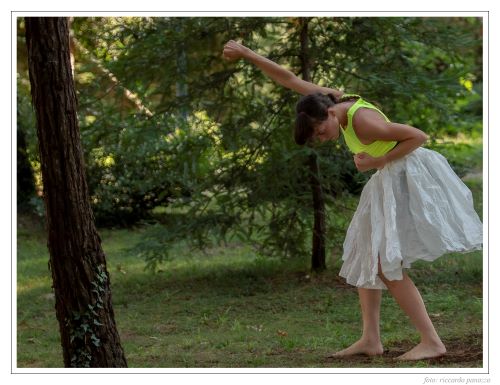
Ilaria Marcolin in “Virtual studies for a Dark Swan”. Foto di Riccardo Panozzo.
The Black Swan: The Impact of the Highly Improbable is the title of the deservedly renowned 2007 book by Nassim Taleb, writer and intellectual originally from Lebanon. Astutely, Taleb uses the image of the black swan to remind us of the catastrophic risk of failure inherent within an uncritical Western analysis of reality, its dire inability to predict the future, its arrogance and unconscious blindness. “Platonicity is what makes us think that we understand more than we actually do. […] The Platonic fold is the explosive boundary […] where the gap between what you know and what you think you know becomes dangerously wide. It is here that the Black Swan is produced.” In the same way, we write with an injudicious conceptual acrobatics, and we know it, for it helps to have accompaniment along the lone path of the unexamined. What we thought we knew about the “reproducibility” of the acclaimed solo for Anna Pavlova by Michel Fokine was incomplete, partial, prejudicial, because hitherto it was unthinkable. Nora Chipaumire has regenerated that white swan into a black one: a swan that emanates from darkness, arises from the afterlife. A phantasmal swan, tenebrous in soul.
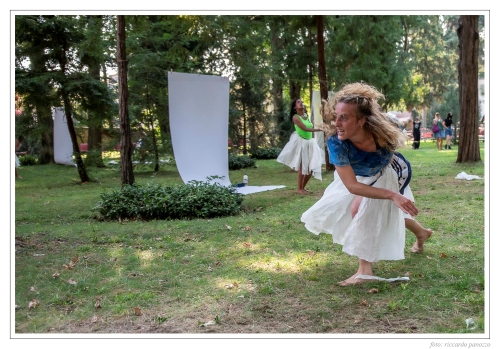 The Dying Swan debuted in St. Petersburg in December 1907, danced to the mellifluously melancholic notes of Le cygne taken from Camille Saint-Saëns’s The Carnival of the Animals, who chose the cello to represent the swan, the piano for the rippled surface of the lake. Pavlova, for whom this movement could have been penned, danced to those notes around the globe, repeating her solo, it is said, 4,000 times. Years later Fokine reflected: “It was almost an improvisation. I danced in front of her, she directly behind me. Then she danced and I walked alongside her, curving her arms and correcting details of poses. […] I make use of the technique of the old dance and the traditional costume […] but the purpose of the dance is not to display technique but to create the symbol of the everlasting struggle in life and all that is mortal.”
The Dying Swan debuted in St. Petersburg in December 1907, danced to the mellifluously melancholic notes of Le cygne taken from Camille Saint-Saëns’s The Carnival of the Animals, who chose the cello to represent the swan, the piano for the rippled surface of the lake. Pavlova, for whom this movement could have been penned, danced to those notes around the globe, repeating her solo, it is said, 4,000 times. Years later Fokine reflected: “It was almost an improvisation. I danced in front of her, she directly behind me. Then she danced and I walked alongside her, curving her arms and correcting details of poses. […] I make use of the technique of the old dance and the traditional costume […] but the purpose of the dance is not to display technique but to create the symbol of the everlasting struggle in life and all that is mortal.”
With these words, Fokine hands us the key with which we can open a treasure trove of delight. Nora Chipaumire makes use of that same key to unlock and reveal her very personal version of “The Dying Swan”.
Filter number 2 | Bodies
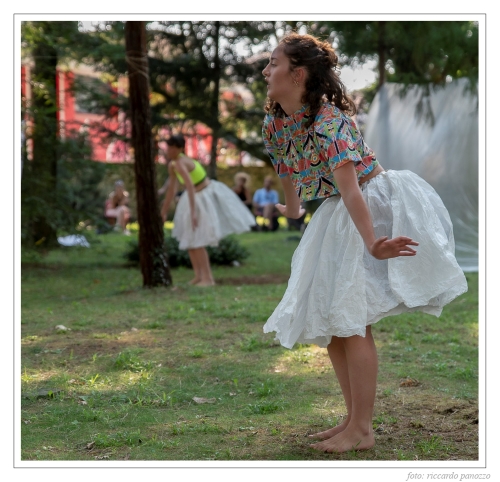
Elena Sgarbossa in “Virtual studies for a Dark Swan”. Foto di Riccardo Panozzo
Nora Chipaumire took Pavlova’s immortal swan by the wing and whisked her off to a new reserve, landing her on the Parolini Garden lawn. There the bird dissociated itself into six young bodies, scattering among the trees, suggesting new roots, all in the midst of an audience likely unacquainted with classical ballet, perhaps oblivious to the saga of this swan, or perhaps some knew it only too well.
We are welcomed by a searing torment, danced in a language that eludes any code. It’s not classical dance, it’s not tribal dance, it’s not “European” contemporary dance, it’s not “African” dance.
It is a stateless dance, like refugees fleeing in a blurry and opaque “rest of the world”. It is a mutilated dance, compromised by objective obstacles: the lockdown, the colonial English language Nora has recourse to when liaising with her Italian-speaking dancers, the physical and gestural background of reference that segregates Nora from her performers. It’s a dance born orphaned from the body, born orphaned from Nora. It’s a dance that experiences death during its birth, because it turns out to be non-transmissible virtually; unlike words, which are reproduced online, travel and proliferate. It is a macabre dance that conceals joy of life.
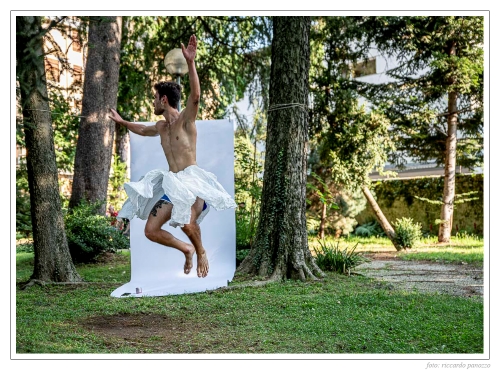 Among the six dancers there is one male, the skilful Giacomo Citton. There is also one black artist amongst the six, the accomplished Selamawit Biruk, to whom the others have relinquished the central stage, the embodiment of a disarming Africa through her conciliate beauty. Despite them, the other performers form a pallid, edulcorated, tragic chorus around her — imprecise translators of an unknown world.
Among the six dancers there is one male, the skilful Giacomo Citton. There is also one black artist amongst the six, the accomplished Selamawit Biruk, to whom the others have relinquished the central stage, the embodiment of a disarming Africa through her conciliate beauty. Despite them, the other performers form a pallid, edulcorated, tragic chorus around her — imprecise translators of an unknown world.
A gust of wind lifts the transparent tarpaulins that separate the dancers from each other. Everyone, without exception, dances with intensity, resisting death. Each of them dances their message, delivered with utter urgency. All dance with their unique physicality, each with their individual expressiveness, each with their own body: an indelible archive of narratives.

Selamawit Biruk in “Virtual studies for a Dark Swan”
The further you move away from the stage, the more of an overview you can take in. It isn’t just the individual bodies that inform, but also their relational composition in space. Looking at them all together, they seem unreal straightaway, immaterial. The rumpus that buries them, attacks them, then the resuscitation of the swan song, reviving the bonds with tradition, dramatically re-establishes connections with the most intimate and profound nature of dance, beyond its genres, beyond its narratives, beyond its conventions. It is a dance of bodies fighting to keep her from dying.
Nora’s message, entrusted to those six bodies, seems to arise from underground. It calls for attention, it demands not only to be seen but also listened to. When Saint-Saëns’s Le cygne gives way to the recorded pandemonium of sirens and gunshots, which mingle ominously with the actual sounds of nearby traffic, the effect is almost ghostly. Through that barefoot dance which intentionally clashes with the echo of tradition, it’s as if the simulacra of the bodies of Darfur’s refugee women had really been brought back to life. The performers’ colourful costumes become the vivacious colours of Africa, as well of its mourning.
Filter number 3 | Emotions
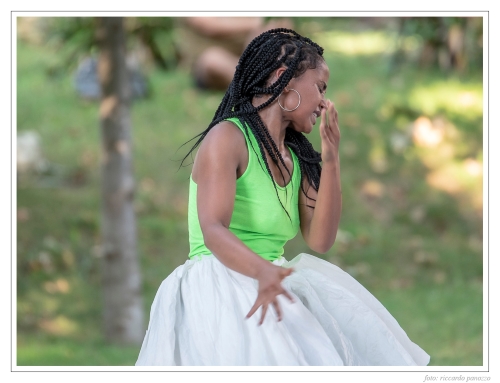
Selamawit Biruk in “Virtual studies for a Dark Swan”. Foto di Riccardo Panozzo.
Dance a little longer before dying. Dance with History tied around your neck like a noose. Dance a little longer, knowing that you are dying. Dance your own death without giving up.
Dance a barefoot dance, which strikes the earth, scolds it, caresses it. A barefoot dance, which beat the rhythm with desperation, with obstinacy, with determination, as if to want to enter the land they trample, to open up a way. As if they were knocking against her belly, asking for shelter. Hands that shake the air, arms that bless and let go, arms that curse and let go, arms that offer and do not forgive.
Bodies that dance not to die.
Filter number 4 | The words of others
The plain was grassy, wild and bare,
Wide, wild and open to the air,
Which had built up everywhere
An under-roof of doleful gray.
With an inner voice the river ran,
Adown it floated a dying swan,
And loudly did lament.
It was the middle of the day.
Ever the weary wind went on,
And took the reed-tops as it went.
[…]
And the creeping mosses and clambering weeds,
And the willow-branches hoar and dank,
And the wavy swell of the soughing reeds,
And the wave-worn horns of the echoing bank,
And the silvery marish-flowers that throng
The desolate creeks and pools among,
Were flooded over with eddying song.
The Dying Swan (1830, Lord Alfred Tennyson)
Anna Trevisan
English translation Jim Sunderland
Foto di Riccardo Panozzo
ITA | Anna Pavlova e Nora Chipaumire: un’eterotopia possibile.
Filtro numero 1 | La tradizione.

Selamawit Biruk in “Virtual studies for a Dark Swan”
“Le utopie consolano; se infatti non hanno luogo reale si schiudono tuttavia in uno spazio meraviglioso e liscio; aprono città dai vasti viali, giardini ben piantati, paesi facili anche se il loro accesso è chimerico. Le eterotopie inquietano, senz’altro perché minano segretamente il linguaggio, perché vietano di nominare questo e quello, perché spezzano e aggrovigliano i luoghi comuni, perché devastano anzi tempo la ‘sintassi’ e non soltanto quella che costruisce le frasi, ma quella meno manifesta che fa ‘tenere insieme’…le parole e le cose. È per questo che le utopie consentono le favole e i discorsi […]; le eterotopie […] inaridiscono il discorso, bloccano le parole su se stesse, contestano, fin dalla sua radice, ogni possibilità di grammatica, dipanano i miti e rendono sterile il lirismo delle frasi.” – scriveva Michel Foucault in Le parole e le cose. Un’archeologia delle scienze umane (1966).

Beatrice Bresolin in “Virtual studies for a Dark Swan”. Foto di Riccardo Panozzo
Forse è per questo che risulta difficile raccontare lo spettacolo Virtual Studies for a Dark Swan di Nora Chipaumire. Perché è il frutto di un’eterotopia, di un genere che lo stesso Foucault non avrebbe mai potuto immaginare: concepita in vitro, durante il lockdown del pianeta Terra. La matrice di questo spettacolo è stata lo spazio digitale. La sua culla è stata lo spazio reale, dentro a corpi in carne ed ossa, con un pubblico in carne ed ossa.
Virtual Studies for a Dark Swan è dunque uno spettacolo figlio dell’isolamento sociale e della lontananza fisica. È figlio di un’impossibilità consapevole, dichiarata dalla stessa Nora Chipaumire nella generosa video-intervista raccolta da Abcdance blog. Un’impossibilità aporetica e dirimente: quella di dover trasmettere virtualmente ad altri corpi la sapienza di un gesto, l’intenzione di un respiro; l’energia di un movimento, la coreografia di un’idea; il calore di un’emozione. Da questa presunta oggettiva impossibilità è nato lo spettacolo di cui stiamo scrivendo.

Ilaria Marcolin in “Virtual studies for a Dark Swan”. Foto di Riccardo Panozzo.
The Black Swan (Il Cigno nero) è il titolo dell’ormai meritatamente famoso libro scritto da Nassim Taleb, intellettuale di origine libanese. Acutamente, Taleb usa proprio l’immagine del cigno nero, per ricordarci il clamoroso rischio di fallimento dell’analisi occidentale della realtà, la sua clamorosa incapacità di previsione del futuro, la sua cecità arrogante e inconsapevole. “La platonicità è ciò che ci fa credere di comprendere più di quanto comprendiamo effettivamente. […] La ‘piega platonica’ è il confine pericoloso […] dove il divario tra ciò che si sa e ciò che si crede di sapere diventa pericolosamente ampio. È lì che si produce il Cigno nero” – scrive Taleb. Allo stesso modo, scriviamo noi con un’acrobazia concettuale impropria e consapevole – perché necessaria ad accompagnarci lungo la strada dell’impensato – ciò che credevamo di sapere sulla “riproducibilità” del celeberrimo assolo di Anna Pavlova e Michel Fokine era incompleto, parziale, pregiudizievole perché, in effetti, finora impensabile. Nora Chipaumire ha rigenerato quel cigno bianco in un cigno nero (The Black Swan): un cigno venuto dalle tenebre (a Dark Swan), arrivato dall’Aldilà. Un cigno che è spirito e fantasma oscuro.

Vittoria Caneva in “Virtual studies for a Dark Swan”. Foto di Riccardo Panozzo
La morte del cigno debuttò a San Pietroburgo nel dicembre 1907, sulle note dolcemente melanconiche del brano Il cigno. Il brano è tratto da Il Carnevale degli animali di Camille Saint-Saëns, che scelse il violoncello per tradurre in musica il cigno, e il pianoforte, invece, per tradurre l’acqua del lago. La ballerina russa Anna Pavlova, per la quale il pezzo era nato, danzò quelle note in tutto il mondo, replicando il suo assolo – si racconta- per ben 4000 volte. Molti anni dopo, a proposito di questo assolo, il suo sodale Michel Fokine, coreografo dell’assolo, avrebbe detto:
“It was almost an improvisation. I danced in front of her, she directly behind me. Then she danced and I walked alongside her, curving her arms and correcting details of poses. […] I make use of the technique of the old dance and the traditional costume […] but the purpose of the dance is not to display technique but to create the symbol of the everlasting struggle in life and all that is mortal”.
Con queste parole, Fokine ci regala la chiave con la quale possiamo aprire il tesoro della fruizione. Questa stessa chiave è stata usata da Nora Chipaumire per raccontare la sua personalissima versione di La morte del cigno.
Filtro numero 2 | I corpi.

Elena Sgarbossa in “Virtual studies for a Dark Swan”. Foto di Riccardo Panozzo
Nora Chipaumire ha preso per mano il cigno immortale di Anna Pavlova e lo ha accompagnato in una zona nuova, facendolo atterrare sull’erba dei Giardini Parolini. Lo ha moltiplicato in sei giovani corpi, disseminandolo in mezzo agli alberi, suggerendogli nuove radici, in mezzo ad un pubblico probabilmente estraneo al balletto classico, che forse ignora la storia di questo cigno o forse la conosce troppo bene.
Ci accoglie uno struggimento graffiante, danzato in una lingua che sfugge ad ogni codice. Non è danza classica, non è danza tribale, non è danza contemporanea “europea”, non è danza “africana”.
È una danza apolide, come i rifugiati in fuga in uno sfuocato e opaco “resto del mondo”. È una danza mutilata, compromessa da ostacoli oggettivi: il lockdown, la lingua coloniale inglese usata da Nora per comunicare con i danzatori di madre lingua italiana, il background fisico e gestuale di riferimento che separa Nora dai suoi interpreti. È una danza nata orfana del corpo, nata orfana di Nora. È una danza che sul nascere sperimenta la morte, perché si scopre non trasmissibile virtualmente, al contrario della parola, che online si riproduce, viaggia, prolifica. È una danza macabra che nasconde la gioia.

Giacomo Citton in “Virtual studies for a Dark Swan”. Foto di Riccardo Panozzo
Tra i sei danzatori, c’è un uomo, il bravo Giacomo Citton. Tra i sei danzatori c’è un’artista nera, la talentuosa Selamawit Biruk, alla quale gli altri hanno lasciato il centro dello spazio scenico, ad incarnazione di un’Africa disarmante per la sua disarmata bellezza. Loro malgrado, gli altri performer formano intorno a lei un coro tragico edulcorato e sbiadito, traduttori imprecisi di un mondo sconosciuto.
Un forte vento solleva i teloni trasparenti che separano i danzatori gli uni dagli altri. Tutti, nessuno escluso, danzano con intensità, per resistere alla morte. Ognuno di loro danza un messaggio che ha l’urgenza di essere consegnato. Ognuno danza con la propria fisicità, ognuno con la propria espressività, ognuno con il proprio corpo, archivio indelebile di storie.

Selamawit Biruk in “Virtual studies for a Dark Swan”
Più ci si allontana dallo spazio scenico, più si riceve una visione di insieme. Non sono solo i singoli corpi a raccontare, ma anche la loro composizione nello spazio. Guardandoli tutti insieme, all’improvviso sembrano irreali, immateriali. Il rumore che li seppellisce, che li aggredisce, resuscita il canto del cigno, resuscita il legame con la tradizione, riannoda drammaticamente le fila con la natura più intima e profonda della danza, oltre i suoi generi, oltre le sue storie, oltre le sue tradizioni. È una danza di corpi che lottano per non farla morire.
Il messaggio di Nora, affidato a quei sei corpi, sembra esalare dal sottosuolo. Pretende attenzione, esige di essere non soltanto visto ma anche ascoltato. Quando la musica classica de Il cigno cede il posto ai rumori registrati di sirene e di colpi di arma da fuoco, che si mischiano sinistramente a quelli reali del traffico, l’effetto è quasi spettrale. Come se con quella danza a piedi nudi, che stride intenzionalmente con l’eco della tradizione, fossero stati richiamati realmente in vita i simulacri dei corpi delle donne profughe nel Darfur. I colori sgargianti dei costumi dei performer diventano i colori dell’Africa e dei suoi lutti.
Filtro numero 3 | Le emozioni.

Selamawit Biruk in “Virtual studies for a Dark Swan”. Foto di Riccardo Panozzo.
Danzare ancora un poco, prima di morire. Danzare con la Storia legata intorno al collo come un cappio. Danzare ancora un poco, sapendo di morire. Danzare la propria morte senza arrendersi.
Danzare una danza a piedi scalzi, che percuote la terra, la sgrida, la accarezza. Una danza a piedi nudi, che battono il ritmo con disperazione, con ostinazione, con determinazione, quasi a voler entrare nella terra che calpestano, per aprire un varco. Quasi bussassero contro il suo ventre, per chiederle riparo. Mani che scuotono l’aria, braccia che benedicono e lasciano andare, braccia che maledicono e lasciano andare, braccia che offrono e non perdonano.
Corpi che danzano per non morire.
Filtro numero 4 | Le parole degli altri.
“The plain was grassy, wild and bare,
Wide, wild, and open to the air,
Which had built up everywhere
An under-roof of doleful gray.
With an inner voice the river ran,
Adown it floated a dying swan,
And loudly did lament.
It was the middle of the day.
Ever the weary wind went on,
And took the reed-tops as it went”.
[…]
And the creeping mosses and clambering weeds,
And the willow-branches hoar and dank,
And the wavy swell of the soughing reeds,
And the wave-worn horns of the echoing bank,
And the silvery marish-flowers that throng
The desolate creeks and pools among,
Were flooded over with eddying song.”The Dying Swan, 1830, Lord Alfred Tennyson
Anna Trevisan
Foto di Riccardo Panozzo
Operaestate Festival | BMotion Danza 2020 21, 22, 23 agosto ore 17.00, Giardini Parolini, Bassano del Grappa Virtual Studies for a Dark Swan Prima nazionale Coreografia Nora Chipaumire Assistente alla coreografia: Mackintosh Pedzisai Jerahuni Assistente in studio a Bassano: Beatrice Bresolin Interpreti: Selamawit Biruk, Beatrice Bresolin, Vittoria Caneva, Giacomo Citton, Ilaria Marcolin, Elena Sgarbossa. Produzione: Operaestate Festival Veneto
Tags: #review, Nora Chipaumire

